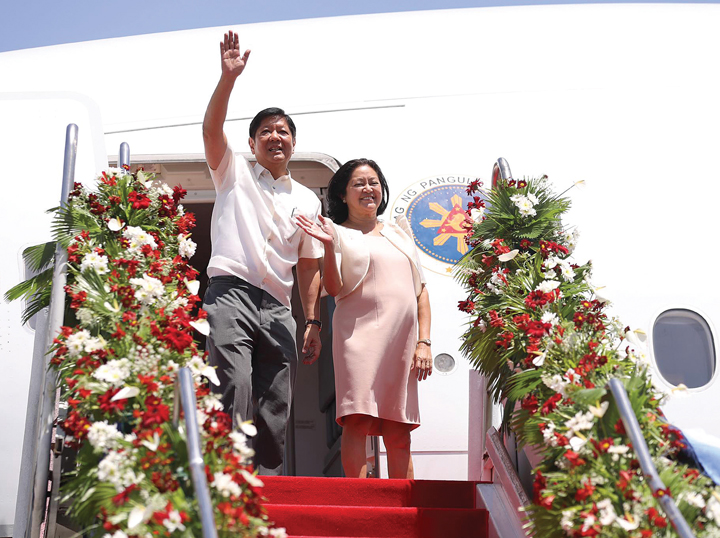THE Armed Forces of the Philippines (AFP) is now crafting the finer points of a plan for the creation and deployment of a sea-based militia force and/or tapping the services of maritime reservists to secure the country’s territorial sovereignty against any unauthorized foreign intrusion.
The formation of maritime militiamen, essentially the would-be counterparts of the military’s land-based paramilitary unit, the Citizen Armed Forces Geographical Unit (Cafgu), or its operationally administered Cafgu Active Auxiliaries (CAAs), could be the best option, given the current troop disposal of the military, amid various internal and external security threats it has to face, according to AFP Chief Gen. Gilbert Gapay.
“The Armed Forces, only 150,000-strong, [is] confronting various security challenges. From the inside, New People’s Army and local terrorist groups, and from the outside, global terrorism. It’s really a very small force and we really have to be backed up by a strong reserve force,” Gapay said.

Very long coastline, WPS
THE chief of staff admits that the formation of maritime CAAs has also been prompted by the need to secure the country’s vast maritime waters and a very long coastline, including the West Philippine Sea (WPS), which is the subject of an aggressive claim by China and where Chinese maritime militiamen maintain their presence.
“In the West Philippine Sea, we have been utilizing reservists, or even in external defense operations, particularly in coastal operations. It may not be in West Philippine Sea, but you know we are protecting 35,000 kilometers of coastline and that makes us the third, or fourth longest in the world,” he said.
“It is imperative for us to really tap our reservists to protect [our coastline]. That’s why one of our efforts is to really develop the maritime reserve force units,” the chief of staff said, adding that in some coastal areas of the country, they called these groups “Bantay Dagat” and “maritime active auxiliaries.”
“In other areas, they call [them] maritime Cafgus, but these are all reserve units complementing the Armed Forces, our Navy, our Philippine National Police, in protecting our shorelines, and definitely, it would also be part of our strategy in protecting our territorial waters in the West Philippine Sea,” Gapay pointed out.

The strategy
THE chief of staff said the formation of Maritime CAAs, which, according to Navy chief Vice Admiral Giovanni Carlo Bacordo, has been in existence for years in the areas of Eastern Mindanao and Western Mindanao, is part of the country’s national defense, or the military strategy dubbed the “Total Force Concept.”
The strategy involves tapping the services of reserve forces in all areas of security operations, especially covering land and water.
The creation of maritime militias has been prompted primarily by calls from groups—and even lawmakers—for the government to secure the WPS from China, which uses militiamen in establishing its presence there.
The Navy, which continues to procure modern and up-to-date platforms, has not been sending so-called gray ships to drive away the Chinese militiamen who use steel-hulled vessels built to harass and even ram at other vessels in the area, on concerns it might provoke a response from Chinese military ships.
Initial deployment
A COUPLE of days ago, Bacordo said the Navy, being a force provider to the military, sent an initial two companies, or about 120 maritime CAAs, to each of the Navy’s task groups deployed across the country, including the unit deployed and operating in Palawan, the province closest to the territory that is being disputed by China.
Going beyond just their purpose as civilian-based defenders and keepers of the WPS, Bacordo cited the importance of forming and deploying maritime CAAs even in waters and coastlines across the country.
“We cannot be at a specific area for long. So if we patrol, let’s say the Bajo de Masinloc area, after a while, that same ship will be recalled to patrol the West Philippine Sea or patrol the Benham Rise, whereas the maritime CAAs can stay longer in an area because that is their place of abode. That is within, close to their place of abode, so they fill in,” Bacordo said.
Force multipliers
“AGAIN, I would like to emphasize, this is a stop-gap measure. We don’t have the capability to be everywhere. Our maritime CAAs, like our reservists, they are our force multipliers. They can fill in our absence,” he added.
Bacordo said there is nothing new in the planned deployment of maritime militiamen as “you were just transferring the CAAs to the waters, to our territorial sea,” and in areas where there is no permanent presence by both the Navy and the Philippine Coast Guard as they keep on moving.
“The relevance of the maritime CAAs is that if you were from Pangasinan, your concern is Pangasinan waters. If you are from La Union, your concern is La Union waters, you don’t have to keep on transferring,” he said.
Image credits: AP/Bullit Marquez, Ritchie B. Tongo/Pool Photo via AP


































